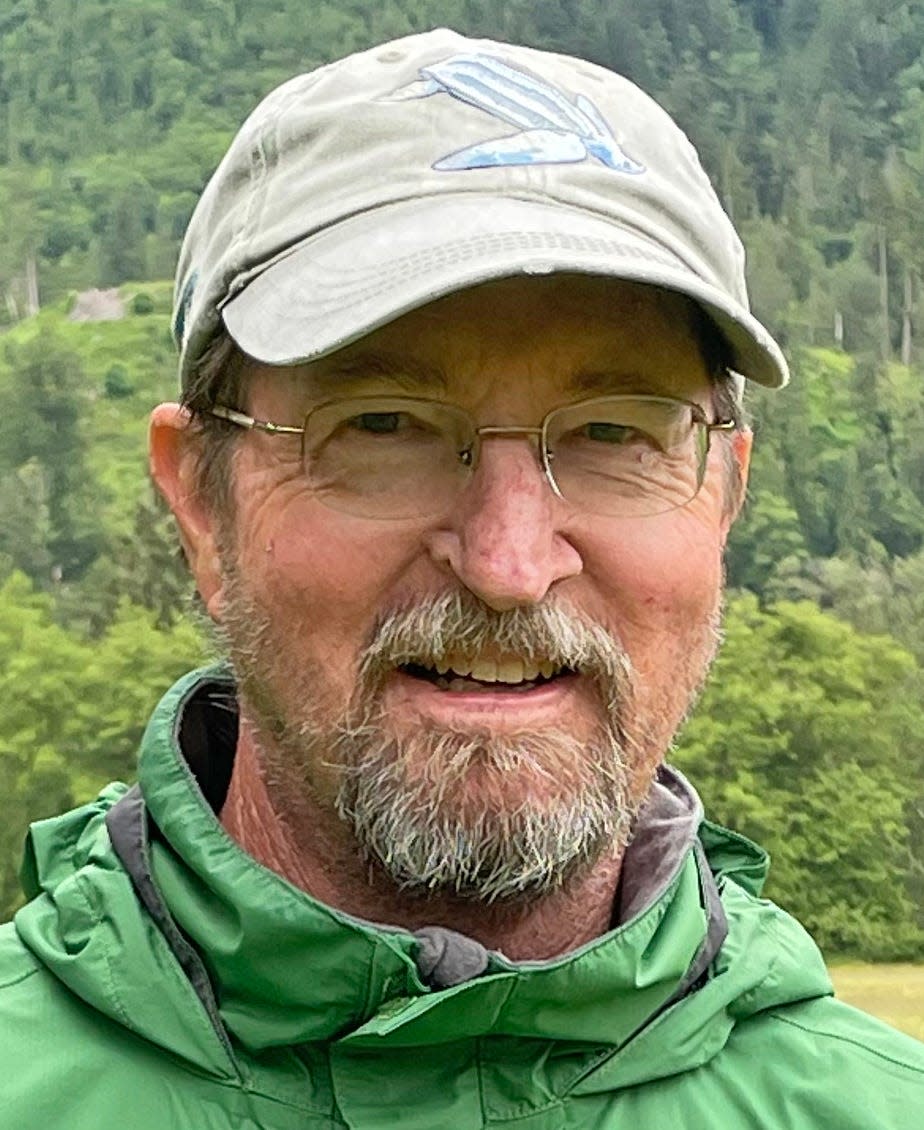The threat to the refuge of Brevard's South Beaches is real: Don't let it happen | Opinion
We all need a peaceful place to visit. For many in Brevard County, that peace is a scenic coastal drive to a quiet beach.
Our southern barrier island offers us this figurative refuge ... and a literal one. South A1A, a National Scenic Byway, is dotted with peaceful properties that make up the Archie Carr Wildlife Refuge, county preserves, and two state parks. These conservation lands were established to protect nesting sea turtles, gopher tortoises, native dune, and rare, maritime hammock.
But these refuges are not an unbroken extent of wild lands. They are a patchwork of protected properties among small communities with single-family lots. This rural, natural, pulse-slowing feel was not an accident. It was a result of diligent county planning, with guidance from a “South Beaches Small Area Plan,” accepted by the Brevard County Commission in 1992. After several years of careful analysis and extensive opportunity for public input, conclusions from this effort guided our current, well balanced, county comprehensive plan.
It would be easy to simply view the low-density, laid-back nature of the South Beaches as a gift to Brevard’s quality of life. After all, this land management benefits us greatly. It has provided us a beautiful place for a weekend visit, and has served to protect natural resources while significantly increasing local property values for our tax base. A gift perhaps, but low-density zoning of the South Beaches was the only sensible outcome of any careful planning analysis. The area has no sewer system to accommodate high-density growth, and has only two lanes to serve local traffic. With causeways to the mainland 27 miles apart, there would be no way to evacuate a high-density population in advance of a hurricane.


So, why would such a sensible and mutually beneficial solution to zoning ever be challenged? Because ... money. Rapacious land speculators leer at the low-density lots of the South Beaches, imagining them stripped of their zoning restrictions. The trouble with overly permissive up-zoning ahead of infrastructure capacity is that after the speculators and developers have devoured and left, we county residents are stuck with the bill for road widening, sewer, and other infrastructure. And until we spend our tax dollars to accommodate this unwise growth, our roadways are clogged and an under-capacity of sewage treatment further poisons our Indian River Lagoon. Even if our spending on infrastructure were to catch up to a South Beaches population surge, the end result would be the same crowded, congested, high-rise dominated, coastal urban sprawl common elsewhere in Florida. The peaceful South Beaches we love would be gone.
More:$26.5M restoration project underway after Hurricane Ian erodes Brevard's south beaches
How could such a tragedy develop? The answer is, Machiavellian (sneaky) politics, which bend to predatory interests as old as this political reference. In spite of our county’s public interests, current South Beaches zoning could be attacked, starting with a secretive, cursory, development-capacity, “fact-finding” exercise. The harm would come from results from this hasty study being treated the same as the judicious scholarship that shaped past precedent. Careful fact-finding takes time. Hasty studies risk bad decision making, but may be convenient for special interests who would benefit from select conclusions. These are the special interests who fund successes in public careers, and such are the hypothetical temptations of local politics.
Unfortunately, this is not merely a hypothetical scenario. Pushed by the commissioner representing District 3, and without public notice, our county commission recently funded an $80,000 “land-use study” with a focus on accommodating high-density development on 15 miles of southern Brevard’s barrier island. One hopes that the study conclusions are not inevitable, and that wise consideration of the public goodwill ensue, but we can’t trust these hopes.
More:Hurricane beach damage exceeds $70 million, wiping out reserve fund
So, what do we do to avoid the tragic loss of our peaceful South Beaches? We let our concerns be known. Each of our Brevard County commissioners should hear from us. “Please don’t change the zoning of the South Beaches” is a message they should hear.
The special interests are powerful, but they are not vast. We are. Conserving our quality of life in a changing world isn’t easy, but writing your commissioners is. Google “Brevard commission map,” find your district and commissioner, and email: d1.commissioner@brevardfl.gov; d2.commissioner@brevardfl.gov; d3.commissioner@brevardfl.gov; d4.commissioner@brevardfl.gov; d5.commissioner@brevardfl.gov.
They would love to hear from you.
Blair Witherington is a 26-year resident of Floridana Beach, and has been conducting research on beaches and sea turtles since 1984. He earned baccalaureate and master's degrees in biology from UCF and a Ph.D. in zoology from the University of Florida. As a research scientist for FWC, Witherington managed Florida’s sea turtle Index Nesting Beach Surveys for 24 years. He is currently a VP and research scientist for the Inwater Research Group. Blair and his wife Dawn have authored several natural history books, including "Florida’s Living Beaches" and "Our Sea Turtles."
This article originally appeared on Florida Today: The threat to Brevard's South Beaches: Don't let it happen | Opinion

